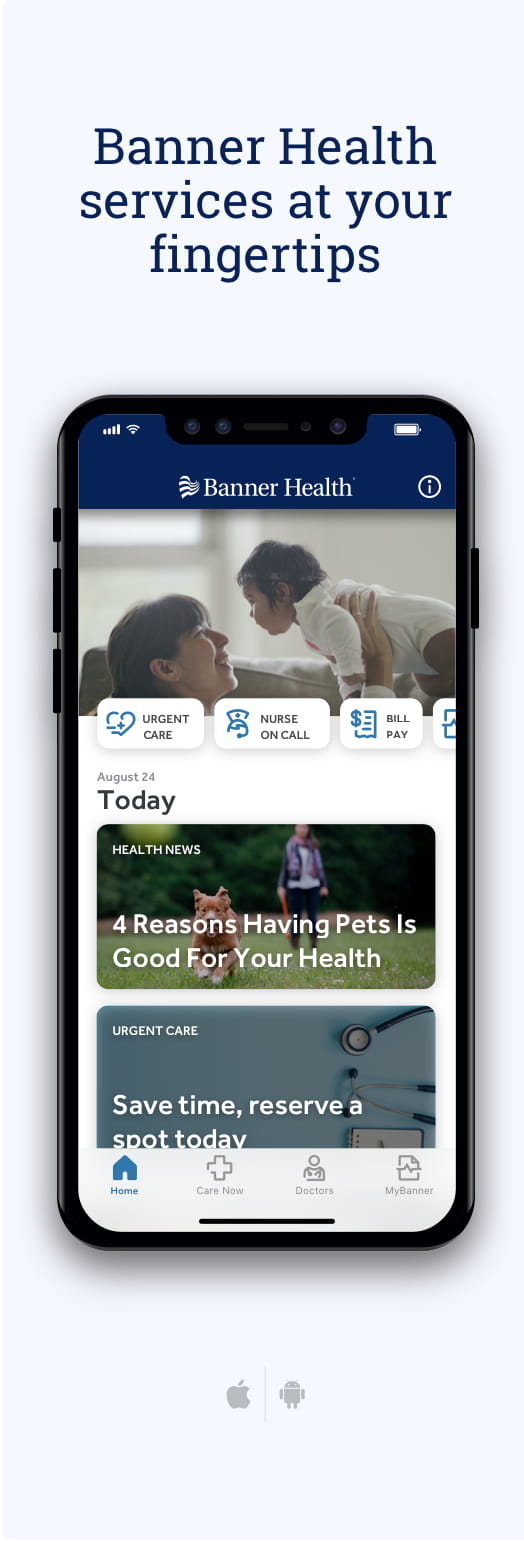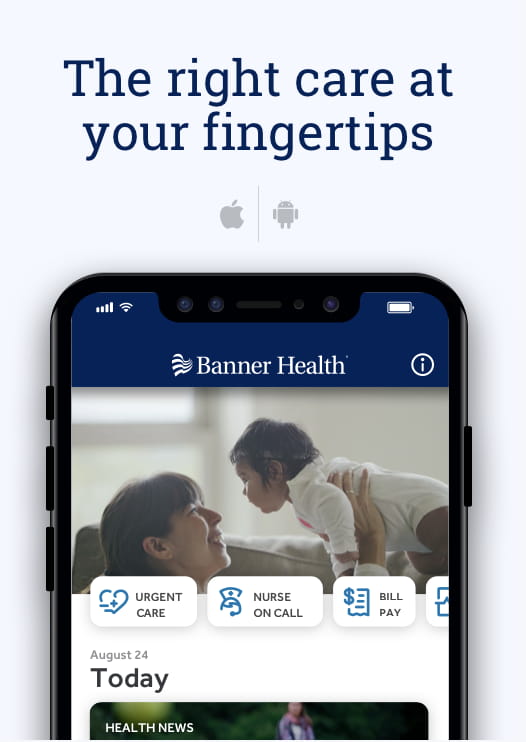Back in 2020, the COVID-19 pandemic sent almost everyone home and lots of people quickly found ways to do their jobs remotely. Today, many people have discovered they can work from home for good and they are spending some or all their days in their remote work locations.
After you got your home office set up, you might not have thought much more about the best ways to maximize your effectiveness and productivity when you’re not in a traditional workspace.
“After the pandemic, many people wanted to continue to work from home, and they are making it work,” said Sara Heck, an employee communications advisor with Banner Health. “Working from home, for many people, is a relief and a blessing. A lot of people no longer have a two- or three-hour drive to and from work each day. That gives them more time to spend with their families even if they’re working longer hours.
In addition to eliminating commute times, some research has shown that working from home allows for greater productivity and less distraction, as well as a more convenient and quieter work environment, better work satisfaction and a lower attrition rate. Heck shared some tips for staying productive.
Set and follow personal and professional ground rules
In many households, spouses, partners and roommates are all working at home part-time or full-time. Ideally, you’ll want a dedicated space where each person can work and has the ability to concentrate. If your home doesn’t accommodate that, set a schedule so, ideally, each person has access to the workspace when they need it.
Share calendars or create a system for accommodating meetings, phone calls, podcasts or video recordings. When you need to be talking, you’ll want to keep the distractions for others to a minimum. Move to a private space if possible and use your headphones and microphone so others only hear your side of the conversation. If you’re the one trying to work while someone else has calls or meetings, listening to music or white noise on your headphones can help you concentrate.
If you have young children who come home after school, develop a system with your partner or spouse to share parenting responsibilities in the afternoons and evenings. Maybe one of you covers childcare from after school through dinnertime, and the other takes over for a couple of hours after dinner so the first can get back to work.
If your job requires it, be dressed appropriately for unanticipated video calls. No one wants to get caught on screen in their pajamas with their hair a mess.
On the professional side, understand what your employer requires and be sure to meet those expectations. Some employers don’t care when you work as long as you complete your tasks. Others expect to be able to reach you quickly during business hours. Some expect fast responses to email all the time, while others lower their expectations at night and on weekends.
Find a schedule that works for you
Many remote workers find they have more flexibility in their days when they work from home. Most find that maintaining regular work hours is best. But that doesn’t mean you have to stick with 9 to 5. You may be able to fit in a regular break to go for a walk or visit the gym. And if you miss the structure and home/work separation you used to get traveling to and from work, then consider a fake commute.
Shorter breaks are essential, too. Try to build some motion into them rather than turning to social media—it’s better for your physical and mental health. When you work from home, you don’t have the natural breaks in your work time that come with walking from your car to your office, checking in with colleagues or attending an in-person meeting. It can be easy to stay stuck at your desk and feel like you don’t have time for a break. Take the time to fill your water glass or tea mug, walk to the mailbox, pick up lunch nearby or try a few minutes of stretches and movement. You’ll feel better when you get back to your important tasks.
“Make it a priority to step away from the computer at several different times during the day to grab a snack, take a short walk and stretch your muscles and back or perhaps just get some fresh air and sunshine on your face,” Heck said. “It doesn’t have to be a long break but stepping away is important.”
Breaks can also mean you work from someplace else. “Working from home doesn’t mean you have to be stuck at home. You can work from many places as long as you have Wi-Fi. If you need a change of scenery, you can bring your laptop with you and work from anywhere,” Heck said.
Create a comfortable workspace
Now is a good time to evaluate your home office workspace to see if you can make any improvements. Ideally, you want an ergonomic desk chair that supports your back and arms. Your monitor should be at or slightly below eye level, and your mouse should be comfortable under your hand. If you do a lot of work with your mouse, consider getting one that’s designed specifically for left- or right-handed people.
“It’s also important to fill your space with things that make you comfortable and inspire you—you’re in that space for several hours each day, and it’s crucial that you feel good in it,” Heck said.
Blocking out sound with white noise, setting up your workspace near windows for natural light and using things like essential oil diffusers or a salt lamp can create a calming atmosphere and improve your focus.
Connect with your colleagues
Maintaining human connection is also important when your work life is fully remote. Regularly scheduled calls with team members or online group chats are great ways to stay connected. Technology makes it easy to interact and helps keep everyone easily accessible.
“Intentionally schedule time with colleagues that allows you to spend five or ten minutes to chat about personal things,” Heck said. That way, you’ll get to know your colleagues better and build trust. If possible, connect over video or phone. “It’s always nice to hear someone live rather than reading an email from them to catch up,” she said. And when it’s possible, get together with your team and spend some time with each other in person.
The bottom line
If working from home has become a permanent thing for you, either every day or in a hybrid format, it might be time to look at how you’re doing things. Making some changes could make your working day more comfortable and productive.
Other useful articles
- Tips for Thriving in the “New Normal” Workplace
- Imposter Syndrome: What Happens When You Feel Like a Fraud
- How Dismissing Your Coworkers’ Stress Affects the Entire Office


